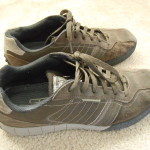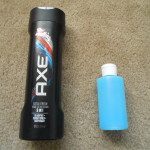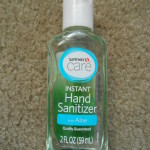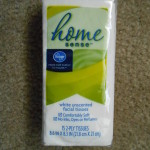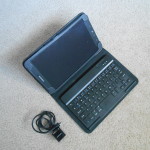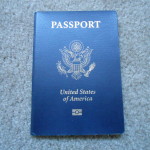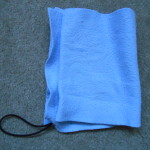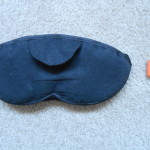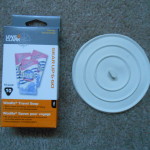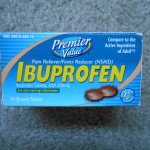One of the hardest parts of traveling is figuring out what to bring with you. It is a constant balance between making sure you have what you need on your trip and not wanting to have to lug around too much stuff.
The typical “American tourist” way to travel is to bring everything you could possibly need, pack it into a few heavy suitcases, and make sure you check into a hotel as soon as possible at each destination to avoid bringing the suitcases around with you. In my opinion, this charade is not necessary and makes for a much less fun, more stressful, and more expensive vacation.
I choose to pack everything in a medium-sized backpack that I can carry around all day with no problem if I need to. Medium-sized meaning 50 liters or less, something that would work as a carry-on in a plane. There are several advantages to this, some of which are:
- Avoiding checked bag fees.
- Not having to arrive 30 minutes earlier to wait through the check in line at the airport (if you check in online).
- Leaving the airport as soon as you get off the flight instead of waiting for the baggage claim.
- Being able to take public transportation to and from any airport with no problem.
- Not having to worry about if your luggage was correctly checked through to your destination.
- Being able to access all of your things on the plane if needed.
- Being able to do “hidden city ticketing” to get cheaper plane tickets. I will write a blog post on this sometime in the future.
- Having the ability to explore any place before having to check in to a hostel or hotel (this becomes especially convenient if your flight arrives early in the morning before typical check-in times).
- Being able to act spontaneously at any time, whether or not your have your stuff with you.
- Learning that you can easily survive for weeks or months at a time with only a few essential things.
- Not worrying that your stuff will get stolen if you leave it in a public place, since you can always bring it with you, even into the bathroom if needed.
- Not having to keep track of as many items.
- Being able to camp easily.
- Being able to go hiking to get from one place or another without worrying about how your bags will get there.
- Being able to carpool or rideshare with others more easily.
- Looking cool like a backpacker.
In short- it just makes sense to travel with less stuff. (The one possible exception I can think of is if you are planning a road trip from home where you have lots of room in your vehicle and do not plan on straying too far from it.)
Fortunately, I have spent many months on the go and have refined my packing list quite a bit through trial and error, so I’ll share it here and hopefully others can get some use out of it as well. Of course, I might have to bring a few specialized things on trips as well (for instance, malaria pills for traveling to Sub-Saharan Africa or an ice axe for climbing mountains) or will not need some things on the list (like a small padlock, which has little value if I will not be using lockers). But for the most part, the list is a good starting point for most travels. I have gone months traveling with only the things listed here. A disclaimer- this list is geared towards guys who are traveling, but women can get a general sense for what to pack by reading it as well.
So lets begin. The first thing you’ll need to figure out is which backpack you want to use. This is the most important thing you will take with you, and you want to make sure it is comfortable to carry around with about 20 lbs in it so you don’t have back pain your whole trip. I went to an outdoors store and tried on all their medium-sized backpacks with weight loaded in, and picked the most comfortable. You will also want to make sure that it can compact down to 54x35x20 cm if needed so that it meets the carry on baggage requirements for every airline (55x40x20 cm will work for most airlines, but not all). Other considerations might be how heavy the pack is and how easily you’ll be able to access your belongings. I use the Osprey Atmos 50 and it works great! (Despite what the Amazon reviews say, the medium version can crunch down to below baggage requirements if its not too full.) 40 to 50 liters is a good size for a typical traveler, or 20 to 30 liters if you plan to go ultralight backpacking.
- My Osprey Atmos 50 pack
- (side view)
A good rule of thumb is to keep the weight of the backpack and everything inside of it to a maximum of 20 pounds. A few airlines actually limit carry-on bag size to around this weight, but the main rationale behind the rule is that it gets quite hard to carry around much more routinely. Here is what I would recommend packing:
Clothes
- Jeans – The workhorse pant. I wear these when I just want comfortable pants and don’t care about much else.
- Shorts – I wear these when I’m sleeping, and wear them as a swimsuit. I like regular or cargo shorts (because I don’t mind sleeping in them) but athletic would work too, its a matter of personal preference.
- Outdoor convertible pants – These are nice to have because they can function as both pants and shorts, and its easy to convert them between the two at any time (which comes in handy on a long, hot bus ride). I have used REI Sahara convertible pants and they are great except that the shorts are a bit too short for my liking. I recently bought Prana Stretch Zion convertible pants since they have the longest shorts out of any convertible pant, and I am very satisfied. Many convertible pants come with at least one zippered pocket as well, which can be useful if you are in areas with lots of pickpockets. Convertible pants can be replaced with a second pair of shorts if you are exclusively traveling in warmer areas.
- Zipper belt – Not only is it nice to have for classy occasions, but also serves as a safe place to carry around cash.
- T-shirts (2-5) – If I’m traveling in places that have washing machines, I generally bring 5 including the one I’m wearing. If not, or if I want to cut down on weight, I will just bring 2 or 3 and do my laundry more often in a sink. Quick drying t-shirts are especially great to have.
- Long sleeve shirt – Nice to have this as a second layer to go over a t-shirt in colder climates. Not necessary in warmer climates.
- Button up shirt – An easy way to look a bit more stylish. Wrinkle-resistant is a must.
- Sweatshirt – I like my fleece hoodie. This will be your warmest layer, and key to not freezing your butt off, so make sure it works.
- Rain jacket – A light, waterproof shell for rainy or windy conditions. This should weigh a half a pound or less and should be able to compact down very easily. This is not for keeping you warm, that’s what the sweatshirt and long sleeve shirt are for! Layering is key.
- Underwear (2-5 pairs) – I like ExOfficio boxers for traveling, they are a bit pricey but offer good sales from time to time. I bring the same number of these as t-shirts.
- Socks (2-5 pairs) – Also bring the same number of these as t-shirts. I have experimented with many types, and prefer these for traveling.
- Shoes – Since shoes take up a lot of space, you’ll only want to wear one pair and make sure that pair works for everything. You’ll want something with decent arch support that is comfortable for walking long distances in, and probably a dark color since darker colors can also pass for being more formal.
- Flip flops – Especially great for wearing in hostel showers, at beaches, or if your shoes get wet.
- Beanie – Nice for keeping your head toasty, or hiding a bad hairdo.
- Scarf (optional) – An additional classy way to keep yourself warm.
- Rain pants (optional) – You’ll really only need these if you’re hiking around in the rainy season. Otherwise, the rain jacket should be fine.
Here are some photos of my travel wardrobe:
- Jeans
- Shorts
- Convertible pants
- Zipper belt
- SmartWool t-shirts
- REI Sahara long sleeve t-shirt
- Patagonia button-up shirt
- Sweatshirt
- Hi-Tec hard rain shell
- ExOfficio boxers
- Socks
- Sketchers relaxed fit memory foam shoes
- Flip flops
- Beanie
Toiletries
- 3 in 1 Shampoo/Conditioner/Body wash – Yes, there are products that work for all three and they can be found in most supermarkets and drug stores.
- Deodorant – Don’t want to forget it, unless you are one of those lucky people who have no body odor.
- Toothpaste and toothbrush – Some people use travel toothbrushes, but I just use a regular one.
- Floss – Can double as string if you need it to.
- Razor – For people who want to shave. It is allowed through airport security, contrary to some rumors.
- Hand sanitizer – Using it will reduce your chances of getting sick, especially with all the foreign germs around.
- Tissues and paper towels – They always come in handy.
- Glasses, glasses case, contacts + spares, contact case, contact solution (if needed) – Bad vision can suck.
- Comb or brush (optional) – These might be useful for people with long hair. I keep mine short so never have to bring them.
- Combined Shampoo/Conditioner/Bodywash
- Deodorant
- Toothpaste and toothbrush
- Floss
- Razor
- Hand sanitizer
- Tissues
- Additional stuff for vision-impaired folks
Electronics
- Smartphone + charger – Smartphones are the single most useful items for traveling in my opinion, especially when they are paired with a plan which offers free data roaming in many countries around the world (like T-Mobile Simple Choice). They can act as a phone, computer, camera, map, music player, flashlight, watch, and alarm clock all in one.
- Earbuds – Nice for listening to music on your smartphone, or watching a movie on the plane.
- Plug adapters – Needed if you are traveling to countries with different plug types than the United States. See the technology and travel page for more information.
- Tablet or small computer + charger (optional) – This may come in handy if your smartphone has a small screen, or you’ll be needing to use a computer regularly on your trip. I usually take my tablet on longer trips along with a lightweight Bluetooth keyboard; combined they weigh less than a pound.
- Camera + charger (optional) – If you enjoy photography and can get better pictures with your camera than your phone, it could be useful to bring along. There is a trade-off because larger cameras can add a lot of weight. Even on trips where I have brought a separate camera, I find that I end up using my smartphone for most of my photos anyway because I always have it in my pocket.
- SD/MicroSD card and any adapters (optional) – Can be useful for transferring photos between devices, and they are extremely light so added weight is not an issue.
- My smartphone of choice is the OnePlus One.
- Earbuds
- Plug adapters (the Australian and European types are pictured)
- Tablet/Bluetooth keyboard combo
- MicroSD card
Other Items
- Passport + any required visas – Remember to check if any countries you are visiting require visas for entry.
- Wallet – At minimum, have a credit card, debit card, ID card/drivers license, and carry your student card if you are a student. Let your bank(s) know you will be traveling ahead of time or they will freeze your cards. A few US dollars of cash and additional credit cards can come in handy in case something goes wrong. Foreign currency is not necessary since you can withdraw it from ATMs with your debit card once you get to your destination for the best exchange rate.
- Daypack – For carrying select items around on days when you can leave your main pack behind. Also works great for storing stuff next to you on planes, trains, or buses instead of having to access the overhead storage. I use the REI Flash 18 because it is extremely light and compacts down to almost nothing.
- Travel towel – These are small, lightweight, super-absorbant, and quick drying. Mine is 26″x8″ and it is more than enough to dry me off after a shower or swim.
- Water bottle – I use a Nalgene quart-sized bottle.
- Keychain flashlight – This barely takes up any room and acts as a backup if your phone runs out of battery.
- Watch – I don’t actually wear a watch, but always bring one with me to tell the time and act as an alarm clock, again if my phone runs out of battery. I usually take the wristband off to save space.
- Sunglasses – Preferably with UV protection.
- Ear plugs and eye mask – These make it much easier to sleep in public places, and when the baby in the seat next to you cries for an entire overnight flight. I use this.
- Small padlock – Nice to have in order to lock up your valuables in a hostel locker.
- Retractable lock – Something like this to lock your backpack in place as an extra precaution. This helps give me some peace of mind while I am sleeping.
- Pen – There are times when you will need one, like for filling out paperwork to cross borders.
- Laundry detergent + drain plug – For doing laundry in a sink if you need to. There is a convenient kit on amazon for buying both together with the detergent in individualized packets, and another kit for replenishing the detergent.
- Clothesline – For hanging clothes to dry. Especially useful since drying machines are uncommon in many areas of the world. I use this one since it is easy to hang in a plethora of locations.
- Ibuprofen + pepto bismol – I carry a few pills of each in a plastic bag just in case I am feeling very ill on the road and cant make it to a pharmacy right away.
- Plastic bags – I bring several of these along, in varying sizes – sandwich, quart, gallon, grocery, and garbage. They can be used for a variety of purposes, among them: holding trash, carrying crumbly food that has been opened, storing muddy shoes, covering your backpack in heavy rain to make it waterproof, and of course storing liquid containers to meet regulations for flying.
- Sunscreen and lip balm with sunblock (optional) – Depending on how easily you get sunburned, the season, and what latitudes you are traveling to.
- Duct tape (optional) – For emergency fixes on the go. Wrap some around a pencil or similar object so it is not bulky to carry around.
- Bowl and spork (optional) – For simple cooking, sharing a meal with friends you meet, or eating cereal with milk for breakfast. Ideally, the bowl will be made of a sturdy lightweight plastic that can be heated up a bit, and the spork will also be a lightweight plastic so it doesn’t get confiscated by airport security like my metal one did in Finland.
- Paper (optional) – I like to bring a folded sheet of paper to write contact info down for people I meet, write short notes on, and doodle on if I get bored on a long flight or bus ride.
- Sleep sheet (optional) – Basically a fist-sized sleeping bag that you can use to sleep just about anywhere in a warm climate (if you are adventurous enough). I would recommend silk for sure as it is much more compact, repels bugs, and holds warmth if it gets wet. I rarely end up using this, but the few times that I have it has been great. Also if hostels charge extra for linens you can use it instead. Although a bit pricey, I use this one.
- Pillowcase (optional) – Put some clothes inside and it makes for a great pillow if you don’t have access to one otherwise.
- Marker (optional) – If you plan on hitchhiking, you can use it to write on scraps of cardboard found along the way. If you’re doing serious hitchhiking, you may want to bring a small whiteboard with an erasable marker instead, so you don’t have to look for new cardboard every time.
- Tide to go pen (optional) – Nice for getting stains out of clothes on the go.
- Lint roller (optional) – Gets lint and hair out of clothes. Nice to have for wool and fleece.
- Playing cards or a small book (optional) – To keep yourself entertained.
- Passport
- Wallet
- REI Flash 18 daypack
- Small travel towel
- Nalgene water bottle
- Keychain flashlight
- Watch with alarm
- Sunglasses
- Ear plugs and eye mask
- Small padlock and retractable lock
- Pen
- Laundry detergent and drain plug
- Clothesline
- Ibuprofen
- Plastic bags
Special Items For Camping
- Tent – As small and lightweight as possible, with a rain fly. Solo travelers might prefer a bivy sack instead.
- Sleeping bag – Down sleeping bags are generally better for traveling with since they are more compact, but they also need to stay dry to hold warmth. Make sure the sleeping bag is rated for the coldest temperatures you could experience. If not, using the optional sleep sheet mentioned in the previous section can increase the warmth of the bag by a little bit.
- Sleeping pad – Inflating ones are best, to save weight and space I usually use one that only goes down to just below my hips.
- Headlamp – Makes setting up a tent in the dark, or really doing anything in the dark, a lot easier.
- Camp stove (optional) – This can be nice for warm meals in the wilderness. However, if you do bring one remember that fuel canisters are not allowed on planes so you will have to buy fuel at your destination.














